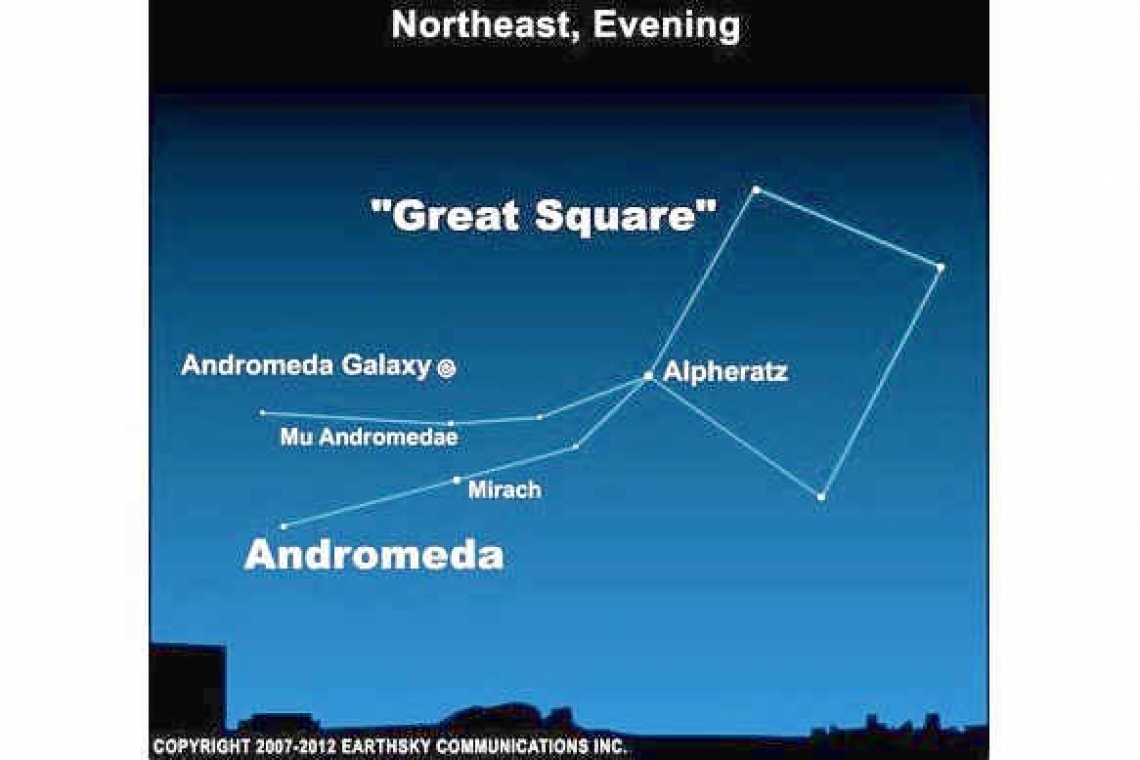~ St. Maarten’s Backyard Astronomy for Sept 18-20 ~
Sun rises at 6:00am
Sun sets at 6:10pm
Lunar phase: first quarter, waxing crescent
Moon rises at 8:08am, Saturday
Moon sets at 8:12pm, Saturday
This weekend, enjoy brilliant stars shining down from a darker than usual sky. This is due to the virtual absence of the moon, while it is waxing from the thinnest of crescents to grow through its first quarter phase. By the middle of the coming week, the moon will be half illuminated, being at the cusp of the second quarter phase. Setting after midnight, the rest of the night will offer a lovely dark sky suitable for star-gazing.
So where do we look this weekend, seeking stars both distant and dramatic? Let's begin looking to the northeast after sunset and there you may observe the Great Square of Pegasus, which, just as the name implies, looks like a giant square with nothing inside – at least no noticeable bright stars shine from inside of this asterism. This weekend, the Great Square will be found east in the early evening and will rise to high overhead by midnight, setting in the west near dawn.
Near to the Great Square, to the left or northeast, is the blurry patch of sky that is actually our nearest galactic neighbor, the Andromeda Galaxy. This hidden jewel is only revealed with the use of magnification, and even a pair of good binoculars may be enough to show you the spiral shape.
According to mythology, Andromeda was the daughter of King Cepheus of Ethiopia and Queen Cassiopeia, who offended some sea nymphs when they claimed Cassiopeia had more beauty than the nymphs. They then complained to Poseidon, the god of the sea, and it all went downhill from there. Moral of the story: Don't upset the sea nymphs! The story ends with the goddess Athena placing Andromeda among the stars, next to the constellations representing her husband Perseus and mother Cassiopeia.
Andromeda Galaxy is also called M31. It was originally charted by Ptolemy in the second century and later catalogued by Messier in 1764. But it wasn't until Edwin Hubble in 1923 that we began to understand that Andromeda was outside of our galaxy. The revelation began humanity's understanding of the true vastness of space.
By the way, the planet Mercury and the bright star Spica are in the vicinity of the young moon, if you see the young and the moon this weekend, look for these two beauties nearby. Enjoy your star filled nights and stay safe!
Thank you for keeping up with the Night Sky articles designed for St. Maarten viewing. If you are out later on in the week, each star rises about four minutes earlier each day than written here, and the moon rises 50 minutes later. Night Sky is researched and compiled by Lisa Davis-Burnett. Earthsky.org is a key resource for information and images. Questions or comments? Email This email address is being protected from spambots. You need JavaScript enabled to view it.







